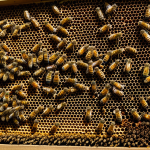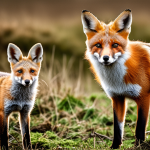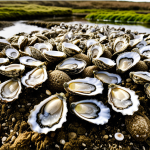Understanding Urban Beekeeping
Urban beekeeping has become a buzzword, highlighting its critical role in modern cityscapes. With an emphasis on sustainability, urban beekeeping supports local ecosystems by ensuring pollination, which is essential for plant reproduction. As cities expand, they can become deserts for pollinators, yet, bringing bee colonies into these areas reintroduces the diversity crucial for thriving urban environments.
The establishment of bee colonies within cities facilitates the natural process of pollination, impacting both private gardens and public parks. When bees traverse these urban areas, they contribute significantly to plant health, yielding more robust and plentiful crops. By enhancing pollination, urban beekeeping plays a part in maintaining the balance of biodiversity in these ecosystems.
Also to read : Unleashing Insights: How GPS Collars Revolutionize Urban Cat Tracking
Moreover, the benefits of beekeeping extend beyond environmental impact. It fosters educational opportunities, encouraging awareness about the importance of bees and their fragile existence. Engaging in urban beekeeping not only revitalises green spaces but also empowers residents to take an active role in sustaining their local environment. Individuals contribute to a collective effort that is beneficial on a community-wide level, creating awareness and engagement with nature.
Suitable Bee Species for Urban Gardens
Urban gardens thrive when a diversity of bee species are welcomed. While honeybees are renowned pollinators, selecting the best honeybee varieties for urban environments can maximise pollination. Species like the Italian and Carniolan honeybees are prized for their gentle temperaments and productivity. These characteristics make them apt for city beekeeping, where proximity to humans and limited space are considerations.
Also to discover : Can Norwich Terriers Thrive as Ideal City Pets in Manchester Apartments?
Native bees often go unnoticed but play a pivotal role in ecosystems. Unlike honeybees, many native bees, such as the red mason bee, do not form colonies but are excellent pollinators. Fostering these native bees in urban gardens helps bolster local biodiversity and supports plant variety with minimal competition. Encouraging solitary bees requires little more than simple nesting habitats and a variety of flowering plants.
Other pollinators, like bumblebees, enhance urban gardening significantly. Bumblebees, distinguishable by their large size, can perform ‘buzz pollination,’ a technique efficient for certain flowers. Maintaining a richly diverse pollinator population through a mix of native bees and other insects creates a balanced, thriving urban garden, contributing positively to local ecology.
Navigating City Regulations
Understanding local beekeeping regulations is essential for urban beekeepers. Cities may have specific guidelines to ensure the safe coexistence of bee colonies with the community. In cities like London, certain permits and licenses are necessary, reflecting the city’s densely populated nature and unique urban landscape. Adhering to regulations helps protect public health and supports harmonious practices.
Key permits often include registering bee colonies with local authorities, which allows for effective management and disease tracking. Additionally, there may be restrictions on hive location and density to ensure safety and minimal disturbance to neighbouring residents.
For those practicing London beekeeping, accessing resources that detail specific urban laws is vital. The London Beekeepers Association, for example, provides guidance and updates on legislation for urban beekeeping. It serves as a valuable resource for understanding necessary legal compliance, along with offering communal support.
Beekeepers must remain proactive in staying informed about any legal changes. Utilising online channels and local organisations ensures that urban beekeeping achieves a balance of ecological benefits while respecting civic requirements. Engaging in responsible beekeeping leads to sustainable and thriving urban ecosystems.
Essential Equipment for Beekeeping
Urban beekeepers must invest in the right beekeeping equipment to ensure a successful and safe experience. The choice of the hive setup plays a crucial role in maintaining healthy bee colonies.
Hive Types
There are several hive styles to consider, each with its benefits. The Langstroth hive is popular for its modular design, making it easy to manage bee frames individually. The Top-Bar hive promotes a natural bee environment with horizontal bars, while the Warre hive mimics a tree’s natural growing environment. When selecting, consider space, climate, and personal preference.
Beekeeping Tools
Beekeeper tools are indispensable in managing hives effectively. Essential items include a smoker to calm the bees, a hive tool for prying apart frames, and a bee brush to gently move bees. Urban beekeepers should also invest in safety gear like a veil, gloves, and a suit to protect against stings.
Maintenance Gear
For hive maintenance, beekeepers need equipment like feeders, varroa trays, and inspection boards for regular checks. Seasonal gear, such as insulation wraps for winter, ensures that hives thrive regardless of weather conditions, supporting robust urban beekeeping practices.
Best Practices for Hive Maintenance
Maintaining a healthy hive requires consistent hive maintenance best practices. A crucial step is undertaking regular routine inspections. These inspections focus on identifying signs of pests or diseases and ensuring bee colonies remain healthy. Urban beekeepers should diligently check for any abnormalities within hives, such as irregularities in brood patterns or the presence of external beekeeping threats like varroa mites.
Feeding and supplementation are also vital. During scarce nectar flows, supplemental feeding with sugar water or pollen patties can sustain bee health. Beekeepers should monitor nutritional shortages and provide needed supplements to maintain colony robustness.
Adapting to seasonal care keeps hives thriving across weather changes. Preparing hives for winter is particularly essential. Protective practices include insulating hives and managing ventilation for warmth and moisture control.
These best practices support vibrant urban ecosystems. By prioritizing inspection, nutrition, and seasonal preparation, beekeepers contribute to urban biodiversity while ensuring the sustainability of their hives.
Attracting and Sustaining Bee Populations
Urban gardens can become flourishing habitats for bees by implementing strategies focused on attracting and sustaining various bee species. One effective approach is planting for pollinators. Selecting the best plants and flowers to attract bees is crucial. Opt for a diverse array of flowering plants, especially those native to the area, as they are naturally adapted to support local bee species. Including a variety of sizes and shapes in blooms will cater to different bee types.
Planting for Pollinators
Maintaining a year-round floral supply ensures constant nectar and pollen sources. Some top choices include lavender, geranium, and borage, known for their bee-friendly attributes.
Providing Water Sources
Bees, like all creatures, require water. Creating bee-friendly watering spots in urban gardens provides essential hydration. Shallow dishes with pebbles or marbles allow bees to land safely while drinking, thus promoting bee health in these environments.
Creating Safe Habitats
Designing gardens with safe habitats in mind is vital. Ensure gardens are free from harmful pesticides and chemicals to protect bee health. Incorporating nesting spots, like bee hotels or drilled logs, creates valuable shelter, fostering an inviting bee habitat.
Resources for Further Learning
Beekeeping Resources are invaluable for both novice and experienced urban beekeepers to enhance their craft and contribute positively to the environment. Engaging with educational materials such as recommended books and online courses offers structured learning and deeper insights into effective beekeeping practices.
Recommended Reading
Explore books like “Beekeeping in Urban Environments” to gain comprehensive knowledge on urban practices. These resources delve into specific techniques and foster a better understanding of bee colonies, allowing readers to apply best practices effectively.
Online Courses
Web platforms now offer myriad accessible courses tailored to learning beekeeping at one’s pace. Such courses provide a blend of theoretical knowledge and practical applications that can be immediately implemented.
Community and Online Platforms
Joining organizations and clubs like the London Beekeepers Association offers practical support and networking opportunities with fellow beekeepers. Participation in online forums and discussion boards creates a collaborative space, facilitating the exchange of ideas and solutions tailored to unique urban challenges. Such interactions offer ongoing support, keeping beekeepers informed about the latest urban gardening strategies to foster healthy bee populations.









